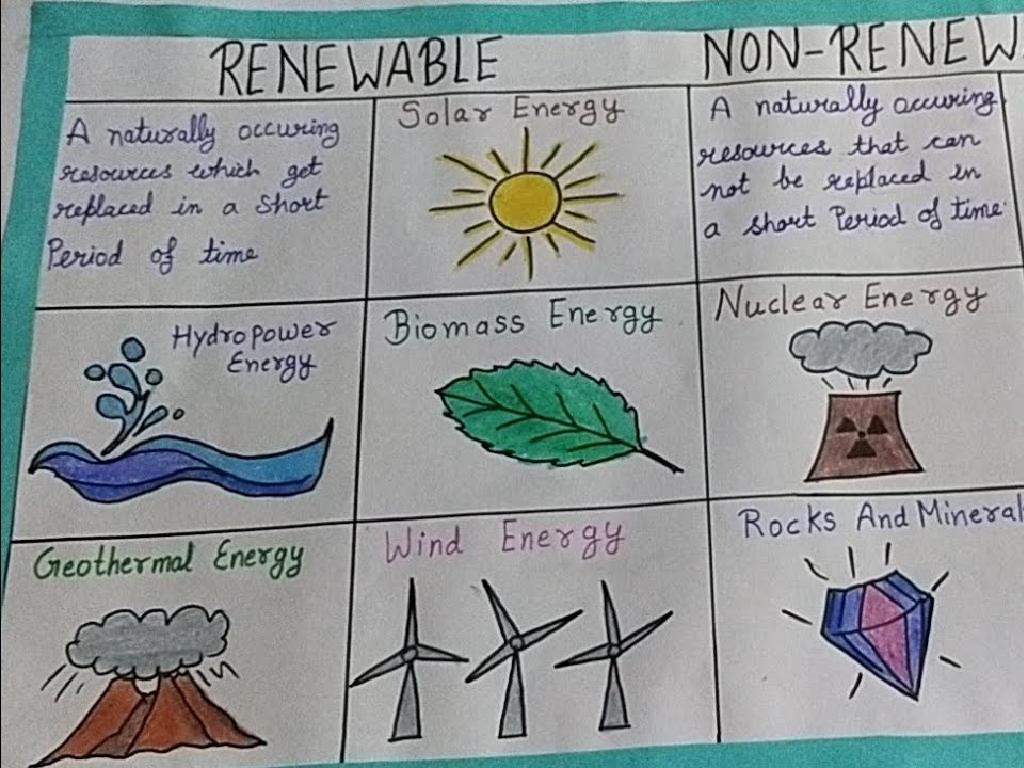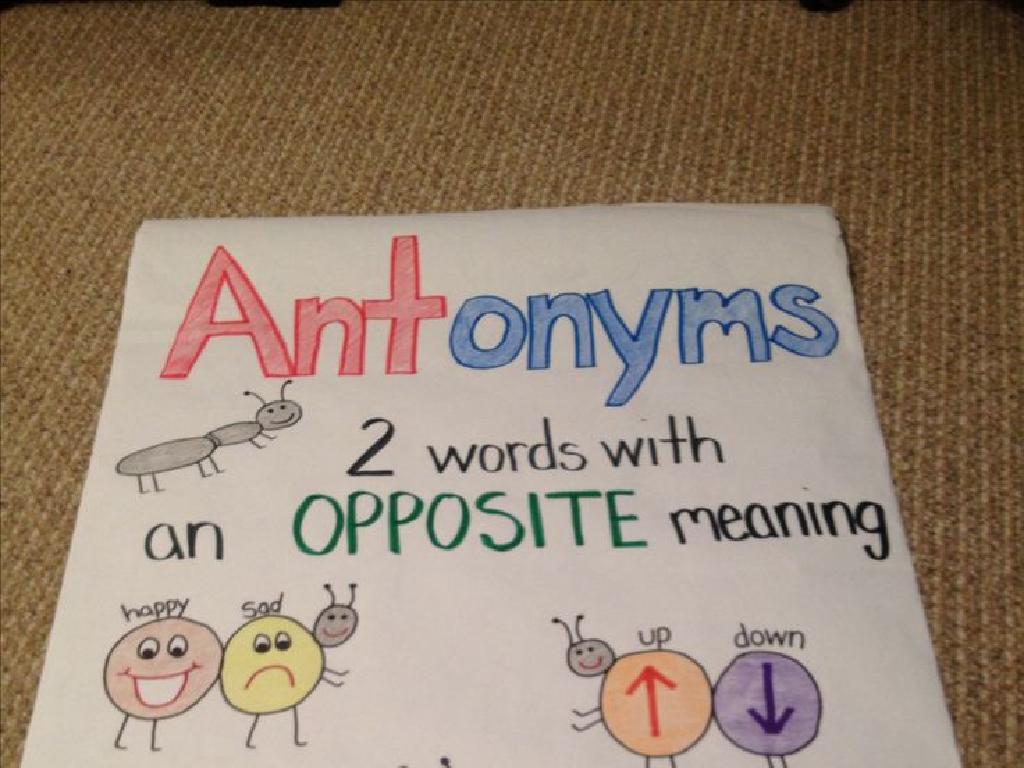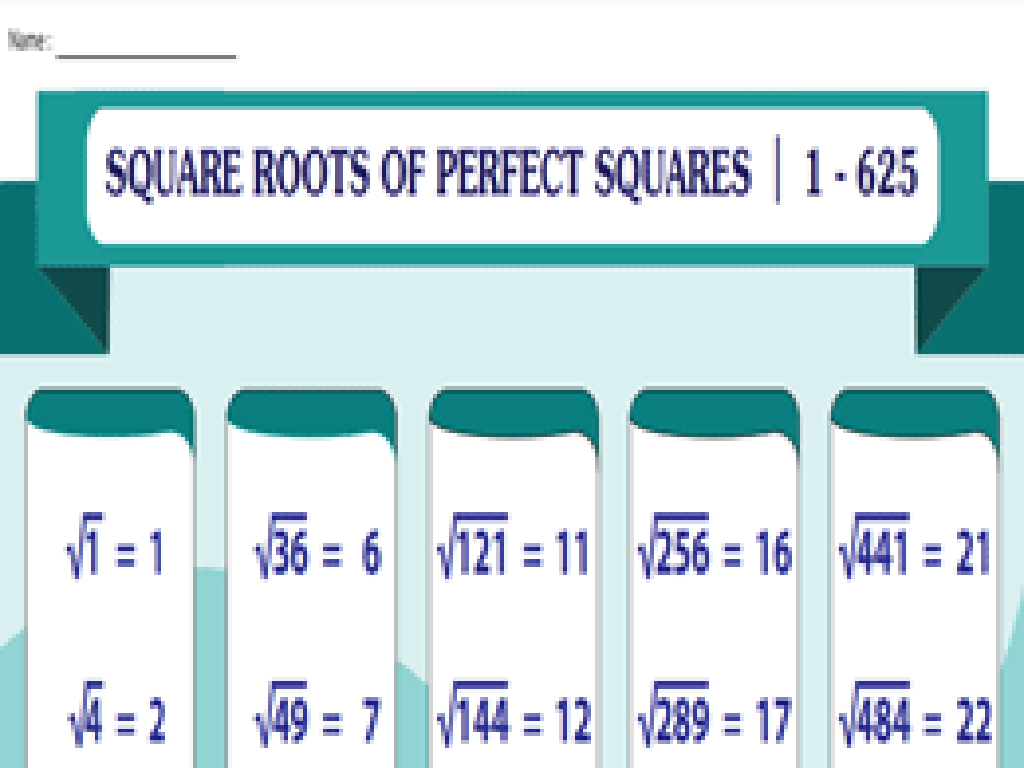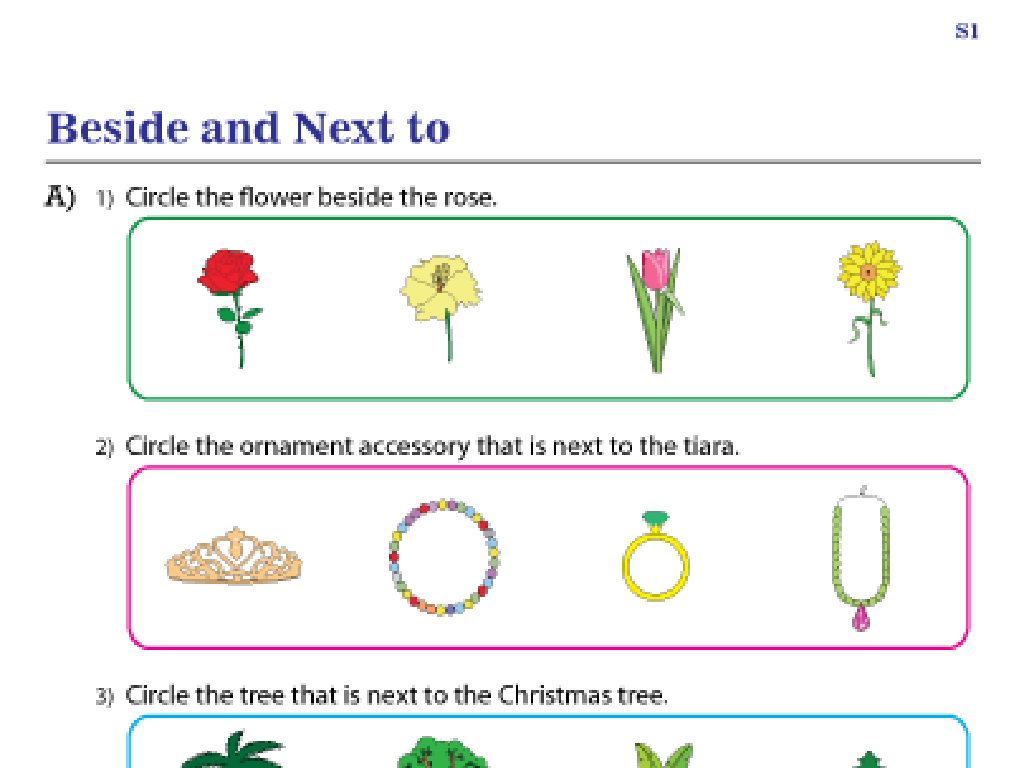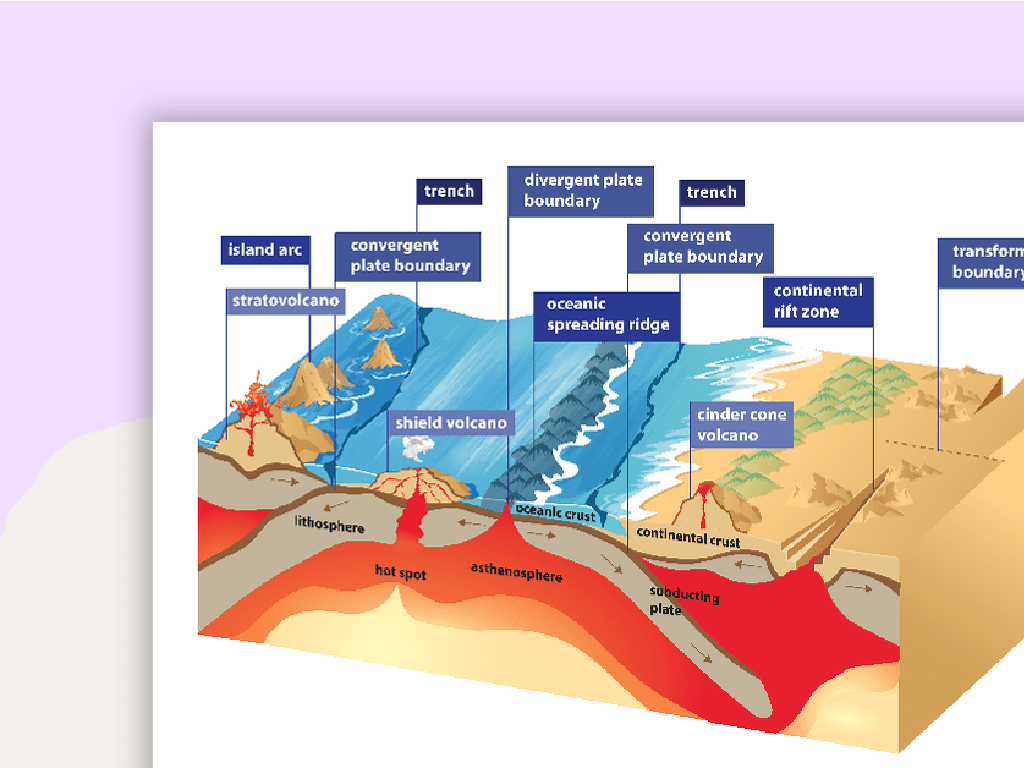Changes Caused By Heating And Cooling
Subject: Science
Grade: First grade
Topic: Changes Of State
Please LOG IN to download the presentation. Access is available to registered users only.
View More Content
Exploring Heat and Cold in Science!
– Learning about changes with temperature
– Effects of heating on objects
– Like ice melting into water when it gets warm
– Effects of cooling on objects
– Like water turning into ice when it’s cold
– Observing changes in everyday life
|
This slide introduces the concept of how temperature can cause changes in the state of objects, which is a fundamental concept in understanding the physical world for first graders. Start by explaining that when things get hot or cold, they can change in different ways. Use relatable examples such as ice melting into water when it’s left out on a sunny day or water turning into ice in the freezer. Encourage the students to think of and discuss changes they have observed in their daily lives, like butter melting on warm toast or a puddle freezing on a cold day. This will help them connect the concept to real-world experiences and better understand the effects of heating and cooling.
Understanding Heating
– Heating makes things warm
– Like when we feel warm in the sun
– The sun heats the Earth
– Sunlight during the day warms our planet
– Ice cream melts on hot days
– Think of how ice cream becomes liquid
|
This slide introduces the concept of heating to first graders by relating it to their everyday experiences. Heating is explained as the process of making something warm, which is a sensation they are familiar with. The sun is given as an example of a natural heat source that warms the Earth during the day. To make the concept relatable and understandable, the melting of ice cream on a hot day is used as an example of the effects of heating. This visual and tangible example helps students grasp the idea of how heat can cause changes in the states of matter. Encourage the students to think of other examples of heating that they have observed in their daily lives.
What is Cooling?
– Cooling makes things cold
– Use fridge or freezer to cool
– Water in the freezer changes
– Water turns from liquid to solid ice
– Let’s see what happens to water!
– We’ll do an experiment with water!
|
Cooling is the process of lowering the temperature of objects or substances. It’s commonly done by using a fridge or freezer. When we put water in the freezer, it gets cold and changes from a liquid to a solid, forming ice. This is a physical change of state caused by cooling. In class, we can conduct a simple experiment where we fill an ice tray with water and put it in the freezer. The next day, we’ll observe the solid ice cubes that have formed from the liquid water. This will help students understand the concept of cooling and its effects on the state of matter.
Changing States: Solid, Liquid, Gas
– Everything has a state
– Solids: Hard with a shape
– Like ice or a rock, doesn’t change shape
– Liquids: Flow and fit containers
– Like water or milk, spreads out in a bowl
– Gases: Invisible but everywhere
– Like the air we breathe, can’t be seen
|
This slide introduces the concept of the three states of matter to first graders. Emphasize that everything around us is either a solid, liquid, or gas. Use tangible examples for solids, such as ice or rocks, which maintain their shape. For liquids, use examples like water or milk, which take the shape of their containers. Explain that gases are a bit trickier to understand because we can’t see them, but they are all around us, like the air we breathe. Encourage students to think of examples from their daily lives and discuss how heating and cooling can change the state of an object, like melting ice or boiling water.
Melting and Freezing
– Melting: solid to liquid
– Like ice becoming water
– Freezing: liquid to solid
– Like water turning into ice
– Examples of melting
Ice cream melting on a hot day
– Examples of freezing
Water in the freezer becomes ice
|
This slide introduces the concepts of melting and freezing to first graders. Melting is explained as the process where a solid changes into a liquid, like ice turning into water. Freezing is the opposite, where a liquid becomes a solid, such as water turning into ice. Use relatable examples like ice cream melting on a sunny day or making ice cubes in the freezer to help students connect with the material. Encourage the students to think of other examples of melting and freezing they have observed in their daily lives. This will help them understand the practical applications of these concepts.
Evaporation and Condensation
– Evaporation: liquid to gas
– Like when water disappears from a puddle
– Condensation: gas to liquid
– Like dew on grass from morning air
– Observing water’s changes
– We’ll watch water evaporate and turn back into liquid!
|
This slide introduces the concepts of evaporation and condensation to first graders. Evaporation occurs when liquid water turns into water vapor, which is a gas; it’s what happens when water ‘disappears’ from a puddle on a sunny day. Condensation is the opposite process, where water vapor cools down and turns back into liquid water, like the dew we see on grass in the morning. To make these concepts tangible for young students, demonstrate with a simple experiment: heat water to see it evaporate and then cool the vapor to see condensation. This visual and hands-on approach will help solidify their understanding of these important physical processes.
Let’s Experiment with Ice & Warm Water!
– Observe ice in warm water
– Predict changes to the ice
– Will the ice melt or stay solid?
– Discuss freezing water
– What makes water turn to ice?
– Guess: water back in freezer?
– What happens when water gets really cold?
|
This slide introduces a hands-on experiment to help first graders understand the effects of heating and cooling on the state of water. Start by showing the students a piece of ice and then placing it in warm water. Ask them to observe and describe what happens to the ice. Encourage them to make predictions about the changes they see. Then, lead a discussion on what freezing means and how water turns into ice. Finally, pose the question about what they think will happen if the warm water, now mixed with melted ice, is put back into the freezer. Provide guidance for the teacher to facilitate the experiment, ensuring safety and engagement. Possible activities include: observing ice melting, refreezing water, drawing the states of water, and discussing temperature effects on water.
Class Activity: Melting and Freezing
– Observe an ice cube in your hand
– What changes do you notice?
– Does it stay the same or start to drip?
– Place the ice in warm water
– Discuss observations with the class
– How did the ice change in the water?
|
This activity is designed to help students understand the concepts of melting and freezing through direct observation. Provide each student with an ice cube and instruct them to hold it in their hands. Ask them to pay attention to any changes they notice over time. Afterward, have them place the ice cube in a cup of warm water and observe the differences. Possible activities include drawing what they see, touching the ice to feel the temperature change, or timing how long it takes to melt. Encourage students to share their experiences and discuss as a class what they learned about how heat can change the state of water from solid to liquid.
Heat and Cool: Changing States!
– Heat melts solids into liquids
– Like ice cream melting on a sunny day
– Cool freezes liquids into solids
– Like water turning into ice in the freezer
– Changes happen everywhere
– Remember, it’s reversible!
– We can freeze and melt things many times!
|
This slide wraps up our lesson on how heating and cooling can change the state of matter. Emphasize that heating can turn solids into liquids, such as ice cream melting in the sun. Cooling can do the opposite, like water turning into ice in the freezer. Highlight that these changes are not just in experiments, but they happen in everyday life. Also, it’s important for the students to understand that these changes are reversible; we can melt and freeze things over and over again. Encourage the students to think of examples they have seen at home or in their environment.
Today’s Science Challenge: Water Transformation!
– Take a small bag of water home
– Freeze the water overnight
– Observe the changes
– Did the water look or feel different?
– Share your findings in class
|
This slide introduces a practical home experiment for students to understand the effects of cooling on water. The task is to freeze water and observe the transformation from liquid to solid. Encourage the students to touch and look at the water before and after freezing to notice the change in state. Ask them to think about how the water’s appearance, texture, and shape may have changed. When they return to class, have a discussion session where each student can share their observations, fostering a collaborative learning environment. This activity will help them grasp the concept of changes in states of matter due to temperature changes.

